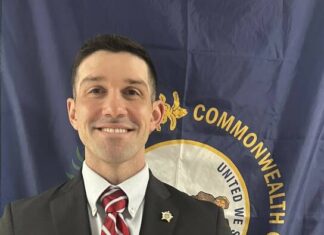Dear editor,
On page 53 the comprehensive plan states:
“Mason County’s number one problem area is Inadequate sewage disposal in the rural areas of the County leading to pollution problems and possible health concerns. Steps should be taken to see that future concentrated development is not dependent upon septic tank systems for sewage disposal.” Compared to houses Solar farms require no septic tank systems.
The comprehensive plan lists the eighth problem area as “Inadequate protection of watersheds. Development is taking place without adequate attention being paid to drainage and soil erosion.” The PUC State siting board required approval of detailed stormwater control systems. Solar income supports 30 years of sod which reduces soil erosion and watershed pollution due to ag chemicals
The comprehensive plan lists the tenth problem area as “Inadequate infrastructure in rural areas to meet the needs of more intensive development. Much of the County has roads that are too narrow for heavy traffic, waterlines that are too small for domestic use or fire flow, and septic tanks that do not function well.” Solar Farms do not need city water, natural gas, sewers, landfill capacity, and during the expected 30-year operation phase make little demand on the road network. Solar lease payments will reduce economic pressure to sell house lots and draw urban activity into the ag zones.
The comprehensive plan lists the thirteenth problem area “The lack of sufficient local governmental resources (money, staff, etc.) in meeting increasing demands for services. It is anticipated that both the City and the unincorporated portions of the County will continue to experience growth and development. With most of the economy/revenues concentrated in the City, it will be increasingly difficult for the County to provide an adequate level of services without new revenues.” 6,000 acres of Solar will over 30 years increase the real property tax revenue of local tax districts by $14,000,000. This while making little demand for additional services.
On page 49 the Comprehensive plan states these goals for:
“Economic development – To support the development of a broad-based economic system that leads to improvements in quality of life by providing enhanced employment opportunities, a diversity of goods and services, and a strong revenue base.” Solar will broaden the local economic base by increasing cash flow to replace lost tobacco and dairy income. Require more and better-paid labor than current activities on the same acreage
“Public facilities and services – To provide the people of Maysville and Mason County with an adequate level of community facilities and services to meet their basic needs and enhance their quality of life.” Solar will make few demands on public services, but 6,000 acres will over 30 years contribute $14 Million in local tax district revenue than if land uses remain unchanged over 30 years.
Page 65 of the comprehensive plan states these “Economic development principles:
Place emphasis on basic economic activities, those that bring new money into the community from outside. These activities will, in turn, have a multiplier effect on the local economy, generating additional non-basic or supporting activities (restaurants, grocery stores, etc.).” Solar will bring large amounts of new money into the county over a long period
“Look for expansion opportunities. Identify and encourage those entities that are considering an expansion to their operation and provide appropriate assistance.” Solar has substantial potential to expand up to the capacity of long-distance electrical transmission lines in the area.
Mason County’s Land Use Management Ordinance also has objectives: On page 27 it states the objective of “Agricultural (A-2 ) as: The A-2 districts have been established to preserve and protect the decreasing supply of prime agricultural land and to minimize urban-type development into rural areas until utilities and other municipal services can be provided efficiently.” Solar’s cash flow will keep its land under sod for the duration of its lease and well-regulated solar will have bonds posted to cover its restoration back to farm tillable land. On the other hand, land converted to housing lots is much more expensive if not impossible to return to food production.
All of these points demonstrate why a solar installation will help the ecological and financial future of Mason County citizens and is much more in line with the comprehensive plan than either subdividing land into house lots or washing the topsoil away with excessive cash grain acres.
Charles W (Bill) Marshall
Maysville





